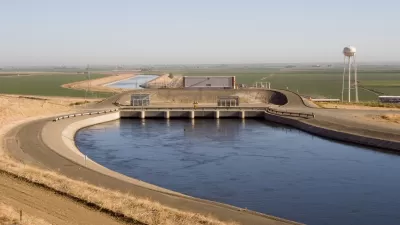Emily Wortman-Wunder looks at the effectiveness of conservation development - a popular tool used by planners across the rural West for the purposes of preserving open space.
Wortman-Wunder investigates the growing application of conservation development or Land Preservation Subdivision (LPS) ordinances - in which developers are given density bonuses for leaving 40 to 80 percent of a typical rural parcel as open space - which "seem to offer a way for mountain communities to have it all."
With an estimated
10 million acres across the U.S. preserved using conservation development since the 1960s, Wortman-Wunder questions the goals of such practices, and what they achieve.
For example, Sarah Reed, a conservation biologist with Colorado State University
and the Wildlife Conservation Society, found that, "While over a third of the
counties [in 11 western states] had regulations that promoted some form of conservation
development, many did so in ways unlikely to preserve critical wildlife
habitat or other natural values. Few promoted land stewardship, or
ensured that open space parcels were contiguous within or among
developments."
Questions also surround the basis for deciding which areas are allowed to be developed and which preserved, management of the conserved land, and lot size. "All of these issues contribute to a growing sense that clustered
development is not living up to its promise," writes Wortman-Wunder.
Thanks to Anthony Flint
FULL STORY: Do subdivisions designed for conservation actually help wildlife?

Alabama: Trump Terminates Settlements for Black Communities Harmed By Raw Sewage
Trump deemed the landmark civil rights agreement “illegal DEI and environmental justice policy.”

Planetizen Federal Action Tracker
A weekly monitor of how Trump’s orders and actions are impacting planners and planning in America.

Why Should We Subsidize Public Transportation?
Many public transit agencies face financial stress due to rising costs, declining fare revenue, and declining subsidies. Transit advocates must provide a strong business case for increasing public transit funding.

Understanding Road Diets
An explainer from Momentum highlights the advantages of reducing vehicle lanes in favor of more bike, transit, and pedestrian infrastructure.

New California Law Regulates Warehouse Pollution
A new law tightens building and emissions regulations for large distribution warehouses to mitigate air pollution and traffic in surrounding communities.

Phoenix Announces Opening Date for Light Rail Extension
The South Central extension will connect South Phoenix to downtown and other major hubs starting on June 7.
Urban Design for Planners 1: Software Tools
This six-course series explores essential urban design concepts using open source software and equips planners with the tools they need to participate fully in the urban design process.
Planning for Universal Design
Learn the tools for implementing Universal Design in planning regulations.
Caltrans
Smith Gee Studio
Institute for Housing and Urban Development Studies (IHS)
City of Grandview
Harvard GSD Executive Education
Toledo-Lucas County Plan Commissions
Salt Lake City
NYU Wagner Graduate School of Public Service





























